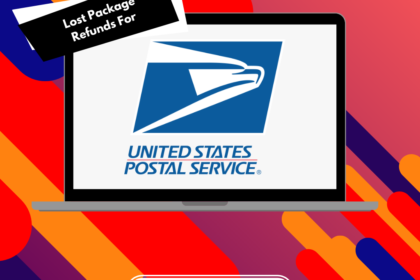Magento offers a ton of features and customizations for e-commerce businesses, making it one of the most popular platforms. It offers a robust architecture, excellent scalability, and unparalleled flexibility, giving you full control over your online store.
There’s no doubt that Magento covers a lot of ground.
But there’s one critical area where it falls short: shipping insurance.
And while it might not seem like much, even a minor mishap can leave you managing losses out of pocket or dealing with unhappy customers. Over time, this can hit your bottom line and damage your brand reputation.
But with Magento not offering an in-built shipping insurance feature, how do you secure your shipments?
In this article, we’ll answer exactly that. We’ll break down everything you need to know about Magento shipping insurance, including its key features, benefits, and how to set it up.
Understanding Magento Shipping Insurance
Shipping insurance adds a layer of protection to your shipments, protecting you against loss, damage, or theft. But since Magento doesn’t have built-in shipping insurance, you need a more specialized solution.
To incorporate shipping insurance into your Magento store, you typically need third-party integrations. This can be through extensions, direct carrier APIs, or shipping insurance providers. Based on which method you select, you can:
- Offer insurance as an optional add-on at checkout
- Automatically insure shipments over a certain value
- Build custom rules that apply to specific products or regions
Benefits of Implementing Shipping Insurance in Magento
Happier customers? Reduced financial risk? Peace of mind? Adding shipping insurance to your Magento store ticks all the right boxes. Let’s look at these benefits in detail:
1. Happier Customers
Let’s be real: no one wants to deal with the hassle of a lost or damaged package. You don’t want that. And your customers most definitely don’t either. When you’re running an eCommerce business, you need to accept that such mishaps are a part of the package. But what happens after that can make or break customer relationships.
If you have shipping insurance in place, you’ll be able to respond quickly and confidently when things go wrong. Instead of shouldering the loss yourself or, worse, transferring it to the customer, you can proactively offer a replacement or refund even before they reach out.
Say you run a luxury home decor store, and $5,000 worth of items go missing in transit. Without insurance, you’ll either have to refund the customer out of pocket or risk a horrible review and a lost customer. But with proper insurance, the customer gets a quick resolution that reflects positively on your brand.
2. Reduced Financial Risk
If you’re dealing with high-ticket items, every loss or damage can leave you in a financial pickle. Even if the item is not expensive, too many mishaps can affect your profits in the long term.
Let’s just assume a small percentage of your shipments are lost, damaged, or stolen. Say 1%. If you process 1,000 orders a month, you’ve got 10 problematic shipments on your hands. Now, suppose your average order value is $200. That’s potentially $2,000 in losses. Every month!
Not to mention frustrated customers, time spent handling disputes, and a hit to your brand’s credibility.
Shipping insurance lets you transfer that risk to the insurer, ensuring you’re reimbursed fairly in case of a loss or damage.
3. Peace of Mind
Dealing with shipping mishaps can be frustrating for both you and the customer. They’re not only unpredictable and time-consuming but often entirely out of your control.
Without shipping insurance, deciding the next step can be an added hassle. Do you shoulder the cost and send a replacement? Do you ask the carrier to reimburse you? Do you do nothing and prepare for a bad review?
With shipping insurance, all those questions are already answered for you. All you need to do is raise a claim and get the money refunded.
How to Set Up Shipping Insurance in Magento
There are several different ways to set up Magento shipping insurance. Depending on your business needs and budget, you can either integrate it with a third-party shipping insurance platform, use an extension or widget, or leverage insurance options provided by your shipping carriers. Let’s walk through each of these methods:
1. Integrating with a Shipping Insurance Platform
One of the easiest and most scalable ways to add Magento shipping insurance is by integrating with a dedicated platform like LateShipment.com. Unlike basic carrier insurance or manual processes, this method automates the entire post-purchase workflow. It lets you apply insurance automatically when a shipping label is created and build custom rules based on order value, destination, SKU type, or carrier.
LateShipment.com also gives you access to centralized, fully automated claims management, allowing your team to file a claim in seconds, right from your Magento dashboard or connected helpdesk.
The best part? LateShipment.com has a 99% claim approval rate, with resolutions typically processed within 5 days. With the platform, you can also track analytics like carrier performance, claim trends over time, and the reason for claims getting denied.
2. Using Dedicated Apps/Widgets
Another way to add shipping insurance to your Magento store is by using dedicated apps or widgets. These are plug-and-play tools that directly integrate with your store’s front end, giving customers the option to opt into shipping protection during checkout.
For example, say a customer adds items to their cart and proceeds to checkout. A small widget appears on the checkout page, offering them the option to insure their order for a small fee. They check the box and continue payment, and that’s it. Their order is insured.
Some apps also offer built-in dashboards that let you track coverage, manage opt-in rates, and review engagement. This method is suitable if you’re looking for a quick, no-fuss solution without any extra technical setup.
3. Carrier Integrations
If you’re using major carriers like UPS, FedEx, or DHL to fulfill orders through your Magento store, you probably already have basic shipping insurance. These carriers typically include limited default coverage (for example, up to $100) with each shipment. Depending on the package value, you can choose to buy additional coverage.
However, carrier insurance typically comes with strict documentation requirements. They may also have a slow claims process, which requires a fair amount of back-and-forth.
For example, if a package is damaged in transit, you’ll need to provide photo evidence, original receipts, and maybe even the packaging, and still wait several weeks to hear back. Plus, they might not even cover every scenario.
Key Features of Magento Shipping Insurance
Here are some key features of adding shipping insurance to your Magento store:
1. Customized Coverage Options
Not every shipment needs the same level of protection. With Magento shipping insurance, you can call the shots on coverage based on what makes sense for your business. For example, you can choose to insure only orders over a certain value, those shipped internationally, or specific product categories.
2. Flexible Rules
With the right Magento shipping insurance integration, you can automate how insurance is applied based on conditions like:
- Auto-insuring all orders above $500.
- Insuring only orders shipped via FedEx or to specific countries.
- Excluding regions or SKUs that don’t require insurance.
3. Claims Tracking and Management
With modern Magento-compatible insurance solutions, you can do a lot more than just insuring products. You can access a centralized dashboard to track insured shipments, see pending claims, and monitor progress.
Common Shipping Insurance Providers for Magento
Here are some third-party Magento shipping insurance providers that you can consider to secure your shipments and protect your profits:
1. LateShipment.com
LateShipment.com is a full-fledged post-purchase experience platform that not only helps you insure shipments but also enhances customer experience through proactive delivery updates and automated claims management. It provides comprehensive coverage of up to $2000 per package, including both product and shipping costs.
The platform also lets you set automatic triggers to apply insurance based on custom rules. Moreover, you can easily submit claims from a centralized dashboard or even via your helpdesk and get them resolved in under 5 days.
2. OrderProtection.com
OrderProtection.com is an app that can integrate with your Magento store and adds insurance as an optional upsell during checkout. It has a claim approval rate of 98% and can handle delivery issues directly with your customers.
OrderProtection.com also manages all customer communication, documentation, and resolutions so your support team can focus on more complex issues.
3. Extend
Another tool you can consider to add shipping protection to your Magento store is Extend. It automatically files a claim through its digital portal, Kaley, in case of loss or damage during transit.
It lets your customers add protection to their orders for just 2–3% of the cart value. It also pays merchants the full retail price to ship a replacement item.
Wrapping Up
Magento offers a seamless way for eCommerce businesses to manage their store. Adding shipping protection further elevates that convenience, safeguarding you against financial losses and providing peace of mind.
With reliable shipping insurance providers like LateShipment.com, you can automate the insurance process, streamline claims management, and gain insights into recurring patterns. Book a demo to see how you can integrate the platform with your Magento store and improve your post-purchase operations.







